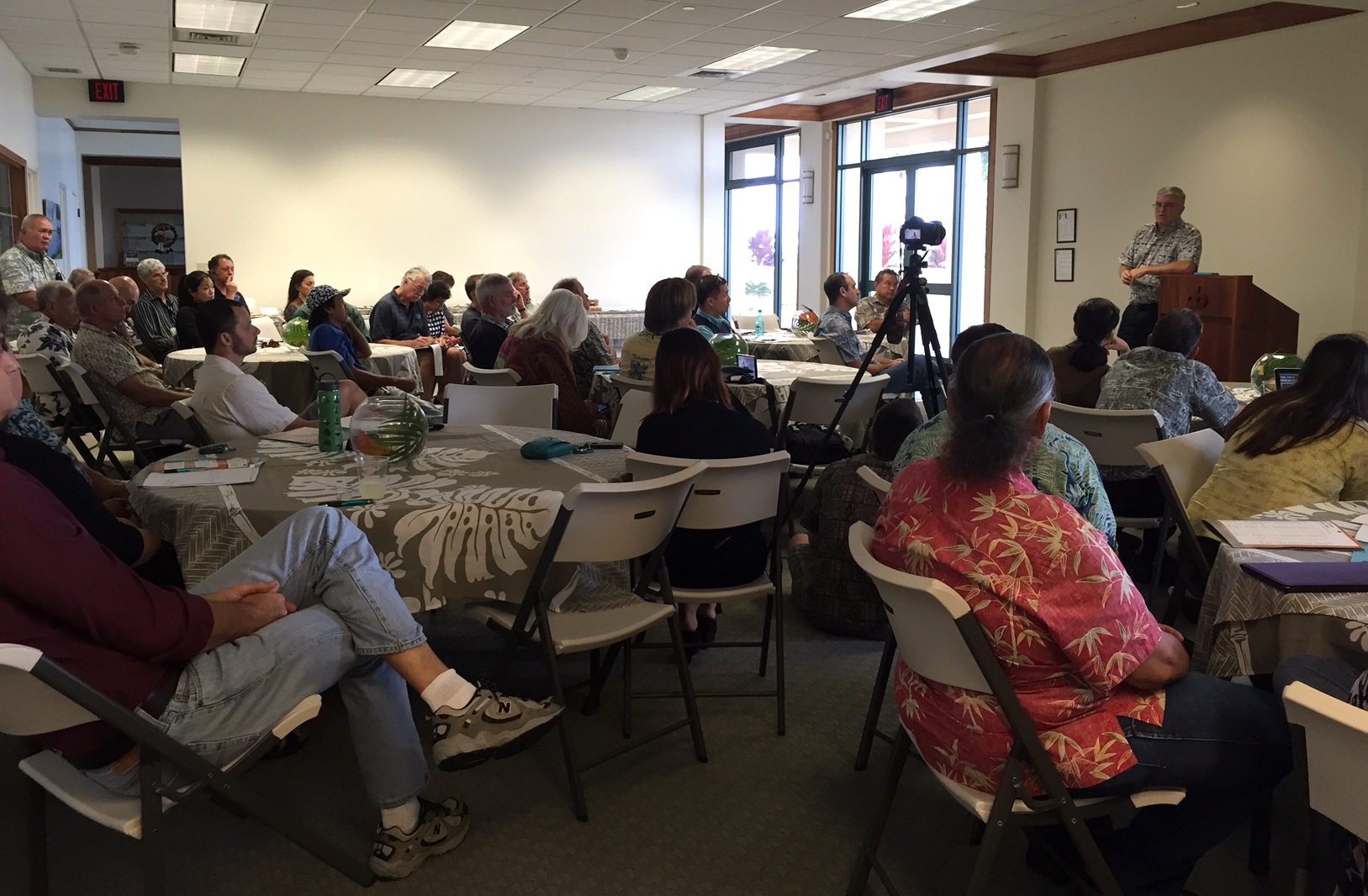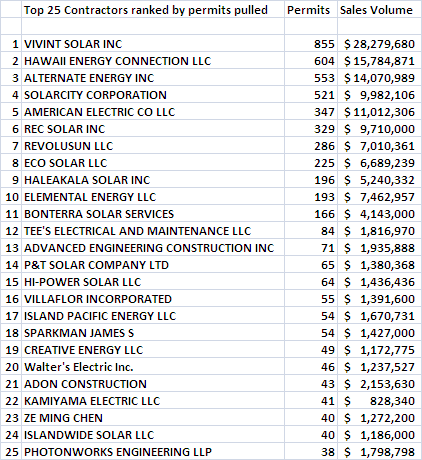This is video of Marco Mangelsdorf of the Hawaii Island Energy Cooperative (HIEC) testifying at the Hawaii Public Utilities Commission on February 9, 2016.
Below the video is the HIEC’s just-released alternative power generation plan, which would move the Big Island faster and cheaper toward cost-effective clean energies and reach close to 100 percent renewable years before the state’s 2045 target date.
(HILO, HAWAII, FEBRUARY 10, 2016)—Hawaii Island Energy Cooperative (HIEC) today released its alternative power generation plan that would move the Big Island faster and cheaper toward cost-effective clean energies and reach close to 100 percent renewable years before the state’s 2045 target date.
The HIEC plan, based on a new analysis of the island’s existing resources and estimates of potential new solar, wind and energy storage resources, presents a less expensive and cleaner alternative to previous plans.
“We are very excited to be able to propose a compelling, practical and doable plan that would accelerate our island’s clean energy transformation in a way that would yield significant benefits for the more than 83,000 electric customers here,” noted HIEC director and spokesperson Marco Mangelsdorf.
According to Mangelsdorf, “By building on the successes achieved by Kauai Island Utility Cooperative to integrate high levels of cost-effective solar PV into the grid while adding just the right amount of storage to ensure system stability and reliability, HIEC would be better able to ensure a lower-cost, more balanced power supply portfolio.”
Through its analysis HIEC has developed a plan that includes:
No new fossil fuel generation
- With the abundant availability of cost-effective renewable energy resources, there’s no need for any additional petroleum-based generation.
- Any fossil fuel substitutions would be based on near-term cost advantages without requiring costly infrastructure improvements.
No liquefied natural gas infrastructure or long-term reliance on fossil generation
- Alternative plan does not use LNG.
- Opportunity fuels such as propane used for lower short-term cost savings with low conversion investments and quick paybacks.
Continued expansion of roof-top solar
- Investment in battery and pumped storage would allow for additional roof-top solar with fewer technical concerns about system reliability.
- Utility scale storage would avoid daytime curtailment and move excess roof-top generation to night time peaks.
Competitively priced, cost-effective utility-scale solar PV and wind
- Utility-scale renewable generation, using Hawaii Island’s abundant solar and wind resources, would replace continued reliance on fossil generation.
- Early retirement of fossil generation would occur as new renewables come on line.
Capital expenditures would be less compared to the current or future investor-owned utility model
- Lower cost of capital due to non-profit status.
Lower cost solar and wind resources would replace LNG conversion costs. Greater efficiencies in overall operations
- Coordinated quick response dispatch would back utility and roof-top solar generation with fossil units, thereby firming variable output for system stability.
- Ability to integrate new low cost renewables as technologies and appropriate smart grid investments improve efficiencies.
Whether, where and when more geothermal energy will be brought on line to be left to the membership and democratically-elected board of the fully operational cooperative
In the Hawaiian Electric Industries-NextEra Energy merger proceedings now being held by the Hawaii Public Utilities Commission, NextEra has asserted that the primary question the Commission should ask itself is whether Hawaiian Electric ratepayers and the State of Hawaii would be better off with or without the sale going through.
HIEC has argued that the Commission should consider the merits of the cooperative ownership model for Hawaii Island.
Noted HIEC president Richard Ha, “Credibility, purpose and a focus on how to best serve and benefit the island’s 195,000 residents is what this cooperative is all about. HIEC’s alternative power generation plan provides an important basis to establish that a cooperative does what its members want, not what is in the best interest of shareholders. We are committed to a path to the island’s renewable energy future that will get us faster and cheaper to where we all want to go—an economy based on more affordable electricity and an environment that’s cared for.”
About Hawaii Island Energy Cooperative
HIEC is a non-profit cooperative association that seeks to establish a member-owned electric utility and encourage non-petroleum-based transportation for Hawaii Island. HIEC presents a unique opportunity for all electricity consumers to “Own the Power.” For more information, visit www.hiec.coop. HIEC is on Facebook and Twitter @HiEnergyCoop






